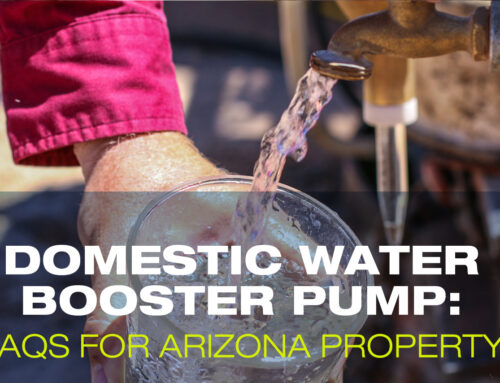Did you know that even though 71 percent of the earth is covered in water only about 0.3 percent can be used by humans?
This is the reason why we need to make the best of all of the drinkable water that reaches us.
Water well casings tend to need repairs over time, which can compromise the drinking water and become really expensive.
Here’s what you need to know to keep your water well casings in great shape.
What Is a Water Well Casing?
In order for water to get from the underground aquifer to the surface, it requires a sealed pathway that will allow the water to flow to the top, also known as a water well casing.
This tube-shaped casing is inserted after the well has been dug to support the sides of the well and keep dirt and groundwater out.
It also stops contaminants from making their way into your water supply.
Water casings are typically made of stainless steel, carbon steel, or plastic, depending on the local geology.
Well casings can vary in diameter depending on what they’re used for.
A residential casing measures about 4 to 6 inches while a commercial water well tends to be a lot wider in diameter.
Well casings are topped with a plastic or aluminum well cap to prevent small animals, insects, and dirt or debris from making it into the well.
The cap also has a vent to help control the water pressure during pumping.
Common Causes of Leaks in Water Well Casings?
One of the most common well casing problems property owners can experience is a crack.
This can happen when the ground shifts due to an earthquake or nearby construction that includes blasting.
Stones or other objects pressing against the casing can also cause leaks.
Casings with splits due to defective or welded seams can allow groundwater and contaminants to get in.
Leaks can even be caused by lightning strikes during a bad storm.
Over time, steel water well casings can also corrode, leading to leaks.
Of course, the part of the casing that sticks up above the ground is especially vulnerable to cracking due to exposure to harsh elements, old age, or even human error (like hitting it with a lawn mower).
What Are the Signs of a Leak?
With water wells, it’s not as easy as you might think to spot a leak, especially if the leak is below the surface.
If you have a leak in your water well casing, it is important to identify the leak as quickly as possible. Here are some of the warning signs to pay attention to:
- You notice the water flow has decreased.
- You see dirt, sand, or sediment in the water.
- You discover a new bacterial or other contamination problem with routine testing.
- The water filters need to be changed more often.
Repairing a water well casing should follow as soon as possible if you suspect a leak.
Having yearly maintenance done by a qualified water well professional and periodic water quality testing will help you stay on top of any concerns.
Importance of Well Casing Integrity
Ensuring the integrity of well casing is paramount for maintaining the quality and safety of water resources.
Beyond preventing contamination from surface runoff, proper well casing also safeguards against potential pollutants like pesticides, fertilizers, and industrial chemicals.
Additionally, maintaining well casing integrity is crucial for stabilizing the well structure, preventing collapse, and maintaining efficient water extraction.
Furthermore, investing in regular inspections and well-maintenance can prevent costly issues down the line.
By addressing any potential damage or corrosion early on, homeowners can avoid expensive repairs or even complete well replacement.
With proper maintenance and attention to well casing integrity, individuals can ensure a safe and reliable water supply for both residential and agricultural purposes.
How to Repair a Water Well Casing
Once you have identified a leak, you have to figure out the cause of the damage.
Do you have a single leak in a small area? Or are you dealing with larger or multiple leaks? Both problems will require different approaches.
An Arizona well specialist can help determine the best course of action by using a camera to locate and inspect the area in need of repair.
If the leak is small, it’s usually a really simple fix. The leak can be repaired using a repair sleeve or a well liner.
This sleeve is small enough to fit in the casing without causing disruption.
Once it’s placed over the leak, it has to be sealed till it holds and there’s no further damage.
Fixing a larger section of a well is not as easy as fixing a small one.
For example, if the problem seems to be caused by corrosion, they might not be able to put in a sleeve to patch it up.
Depending on the damage, a professional might suggest to drill a new well. But this is an extreme case.
It’s important to consult a professional right away if you suspect there’s a leak.
You can keep the water well casing in perfect shape moving forward by scheduling regular inspections.
Repairing Water Well Casings: The Bottom Line
Although repairing water well casings depends on the level of damage, catching the problem early on can facilitate the repairs.
Make sure you spot the signs early on, call a professional, and have regular maintenance done on the well.
___________________________________________________
Do you suspect that your water well casing requires repair? Call Pump It Up, an experienced Phoenix residential well pump repair business, at 623-582-5069 today! We offer expert services and fair pricing for well installation, maintenance, and repairs.






